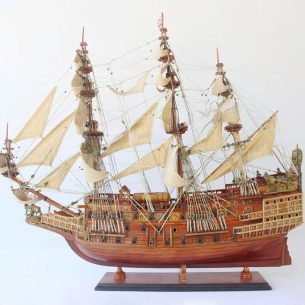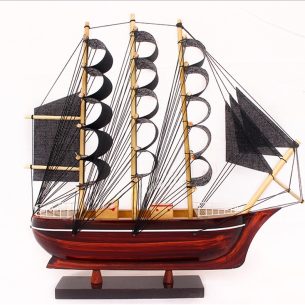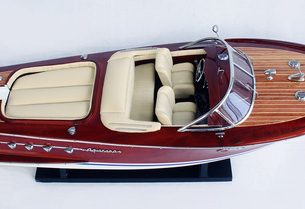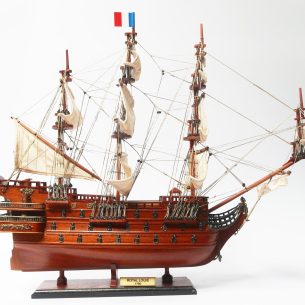Wasa 50
Highlights about this Wasa (Vasa) model ship:
- This model ship is entirely handmade by skilled and experienced craftsmen, using the plank on frame construction method
- No kits are use• Anchors, guns, decorations, and other intricate details sculpted of metal
- Meticulously sewn sails, keep the sails from wrinkle
- Use high-quality wood such as rosewood, ebony, black wood, mahogany wood…., timbers are after process step of pre-construction.
- The Wasa model ship is built on scale by the original plan, then drawn up and painted by actual photographs to ensure the best accuracy.
$238.99
WASA (VASA)
The 17th Century
Wasa (or vasa) is a Swedish warship built 1626-1628. She sank after sailing less than a nautical mile into her maiden voyage on 10 August 1628. She fell into obscurity after most of her valuable bronze cannons were salvaged in the 17th century. After she was located again in the late 1950s in a busy shipping lane just outside the Stockholm harbor, she was salvaged with a largely intact hull in 1961. Until 1987, she was moved to the Vasa Museum in Stockholm.
The ship is one of Sweden’s most popular tourist attractions and and has attracted 29 million visitors
During the 1961 recovery, thousands of artifacts and the remains of at least 15 people were found in and around the hull of the Vasa by marine archaeologists. Among the many items found were clothing, weapons, cannons, tools, coins, cutlery, food, drink and six of the ten sails.
The artifacts and the ship herself have provided historians with invaluable insight into details of naval warfare, shipbuilding techniques and everyday life in early 17th-century Sweden. Vasa was intended to express the expansionist aspirations of Sweden and to glorify king Gustavus Adolphus. No expense was spared in decorating and equipping the Vasa, which was also one of the largest and most heavily armed warships of its time.
| Weight | 3 lbs |
|---|---|
| Dimensions | 25 × 7.5 × 22.3 in |










Reviews
There are no reviews yet